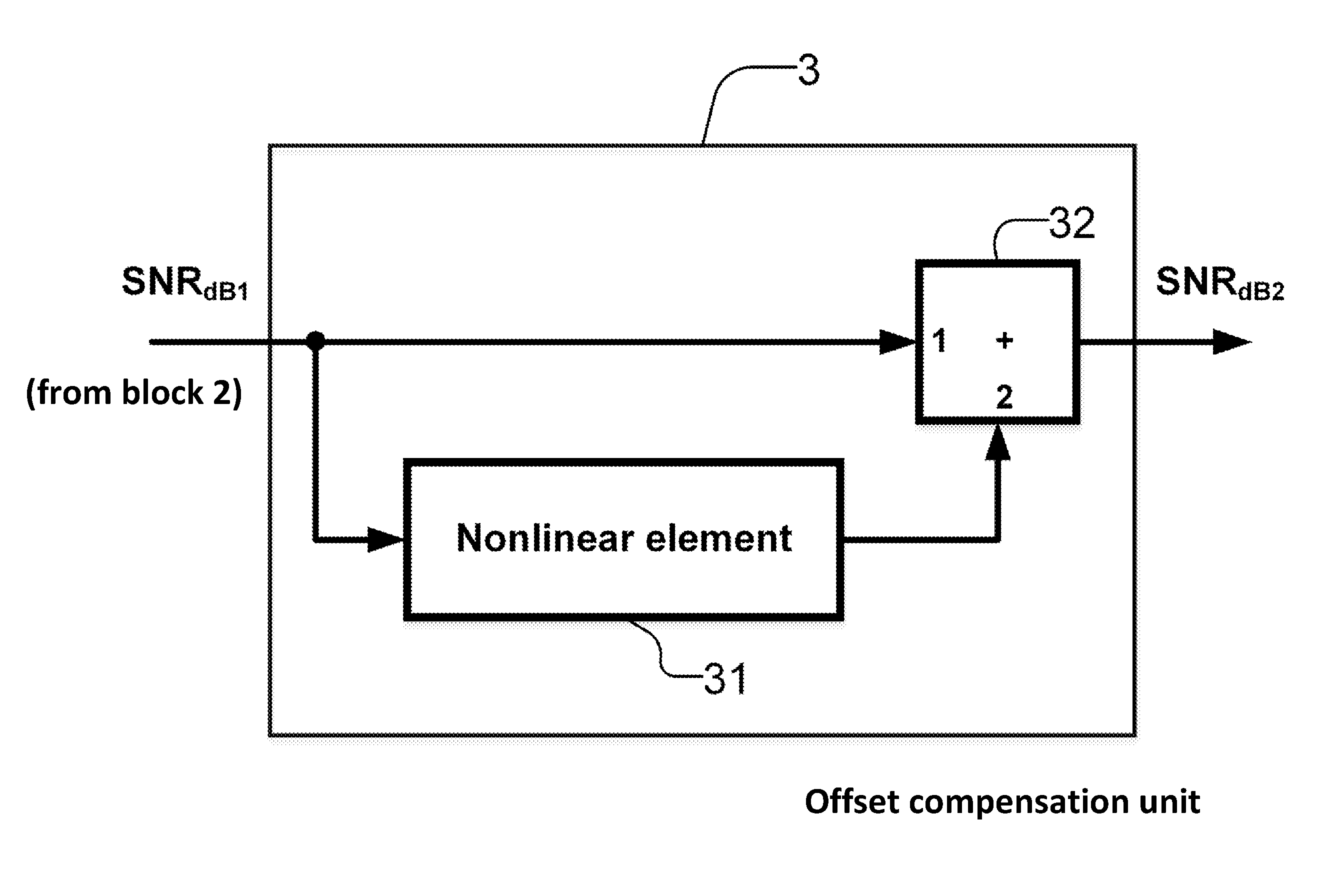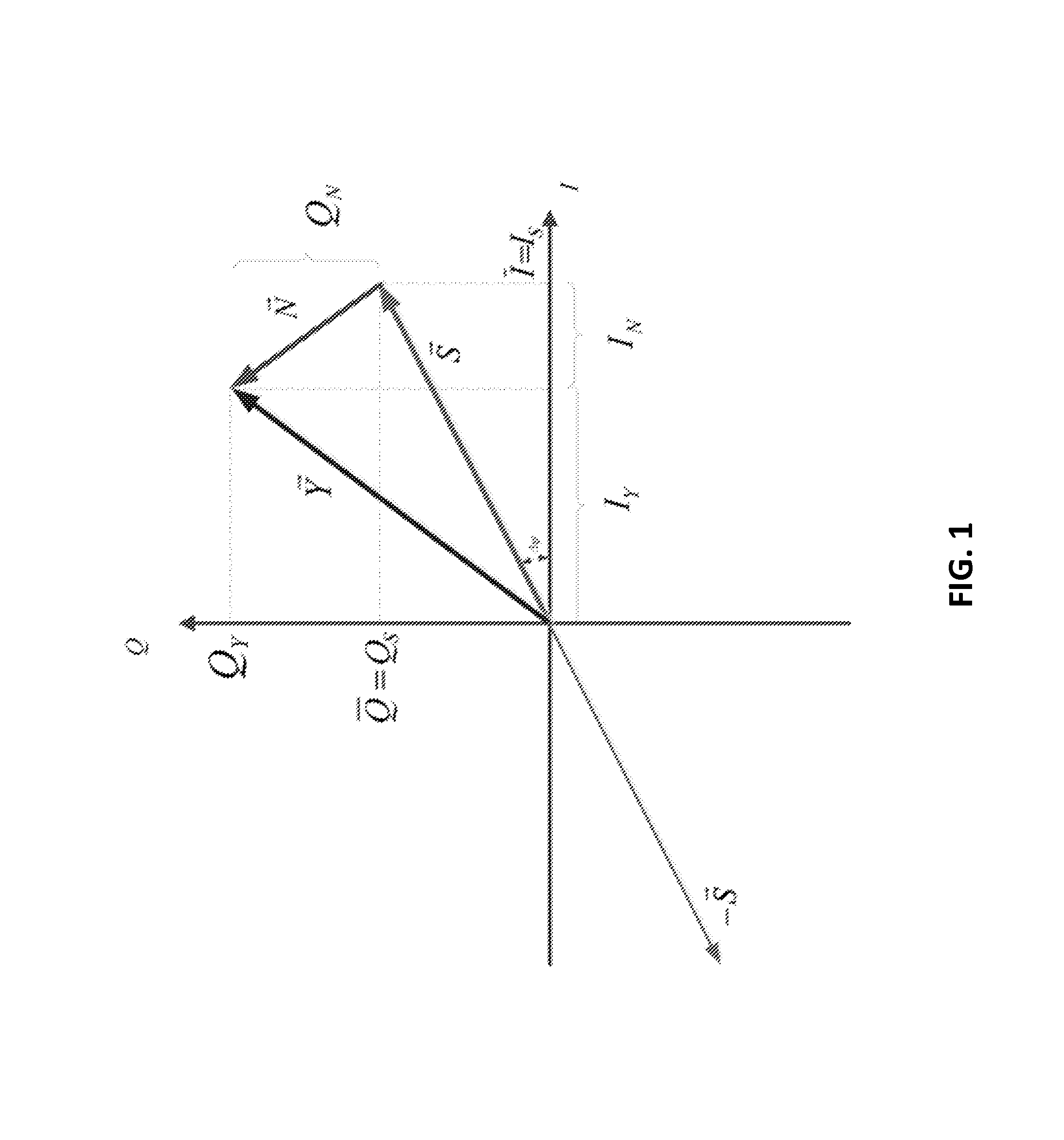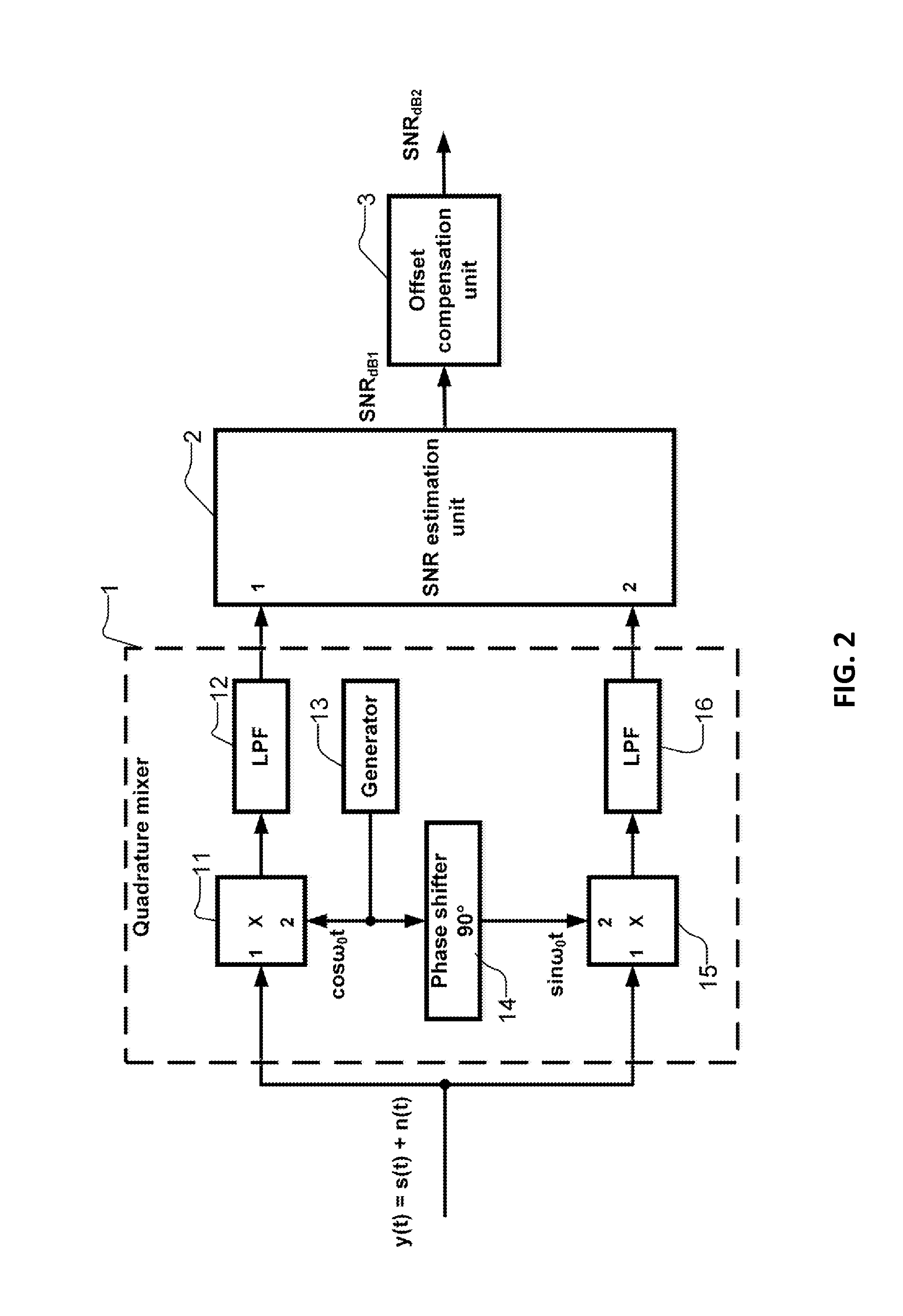Method and apparatus for estimating the current signal-to-noise ratio
a signal-to-noise ratio and current signal technology, applied in the direction of electrical equipment, transmission monitoring, receiver monitoring, etc., can solve the problems of signal-to-noise ratio, method and device producing considerable errors, etc., and achieve the effect of improving the current signal-to-noise ratio
- Summary
- Abstract
- Description
- Claims
- Application Information
AI Technical Summary
Benefits of technology
Problems solved by technology
Method used
Image
Examples
first embodiment
[0109]the SNR estimation unit (2) is shown in FIG. 3. The SNR estimation unit (2) is made as a series-connected absolute value / module calculation unit (201), a first mean unit (202), a first squaring unit (203), a first summer (204), divider / splitter (209) and a dB-recalculation unit (210); the input of the absolute value calculation unit (201) being the first input of the SNR estimation unit (2), the output of the squaring unit (203) is connected to the first input of the first summer (204), the output of which is connected to the first input of a divider (209), and the output of the dB-recalculation unit (210) being the output of the SNR estimation unit (2). The SNR estimation unit (2) includes a series-connected sign determination unit (205), a multiplier (206), a second mean unit (207), a second squaring unit (208). The input of the unit for determination sign (205) is switched to the first input of the SNR estimation unit (2), and its output is switched to the first input of th...
second embodiment
[0111]In a device to measure the current signal-to-noise ratio, the SNR estimation unit (2), see FIG. 4, is a series-connected first squaring unit (301), first a mean unit (302), a first subtraction unit (303), a summer (304), a divider (307) and a dB-recalculation unit (308), the output of which is the output of the SNR estimation unit (2). The input of the squaring unit (301) is the first input of the SNR estimation unit (2), the output of the first mean unit (302) is connected to the first input of the first subtraction unit (303), the output of which is connected to the first input of the summer (304), the output of which is connected to the first input of the divider (307). A series-connected second squaring unit (305) and second mean unit (306), and the input of the second squaring unit (305) is connected to the second input of the SNR estimation unit (2), the output of the second mean unit (306) is connected to the second input of the first subtraction unit (303) and to the f...
third embodiment
[0113]In the device to measure signal-to-noise, the SNR estimation unit (see FIG. 5) includes a series-connected absolute value calculation unit (401), a first mean unit (402), a first squaring unit (403), a summer (404), a divider (409) and a dB-recalculation unit (410), the output of which is the output of the SNR estimation unit (2), and the input of the absolute value calculation unit (401) is connected to the first input of the SNR estimation unit (2). The output of the first squaring unit (403) is connected to the first input of the summer (404), the output of which is connected to the first input of the divider (409). The device also includes a series-connected sign determination unit (405), a multiplier (406), a second mean unit (407), a second squaring unit (408), a subtraction unit (413) and a scaling unit (414), the output of which is connected to the second input of the divider (414).
[0114]The input of the sign determination unit (405) is connected to the first input of ...
PUM
 Login to View More
Login to View More Abstract
Description
Claims
Application Information
 Login to View More
Login to View More - R&D
- Intellectual Property
- Life Sciences
- Materials
- Tech Scout
- Unparalleled Data Quality
- Higher Quality Content
- 60% Fewer Hallucinations
Browse by: Latest US Patents, China's latest patents, Technical Efficacy Thesaurus, Application Domain, Technology Topic, Popular Technical Reports.
© 2025 PatSnap. All rights reserved.Legal|Privacy policy|Modern Slavery Act Transparency Statement|Sitemap|About US| Contact US: help@patsnap.com



